Ionic Bonding
Definition
Ionic bonding is the type of bonding that occurs when one atom transfers one or more electrons to another atom. This transfer of electrons results in the formation of positively and negatively charged ions, which are then attracted to each other due to their opposite charges.
Formation of Ionic Bonds
Ionic bonds are formed between metals and non-metals. Metals tend to lose electrons to form positively charged ions (cations), while non-metals tend to gain electrons to form negatively charged ions (anions). The electrostatic attraction between these oppositely charged ions results in the formation of an ionic bond.
Characteristics of Ionic Compounds
- Formed by the combination of cations and anions
- Have high melting and boiling points
- Dissolve in water to form conducting solutions
- Form crystal lattices in the solid state
- Generally have a high degree of ionic character
Examples of Ionic Compounds
Common examples of ionic compounds include table salt (sodium chloride, NaCl), calcium chloride (CaCl2), and magnesium oxide (MgO).
Study Guide Questions
- What is an ionic bond?
- Explain the formation of ionic bonds.
- What are the characteristics of ionic compounds?
- Provide examples of ionic compounds.
◂Biology Worksheets and Study Guides High School. Invertebrates
Worksheet/Answer key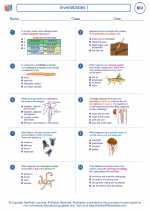 Invertebrates I
Invertebrates I  Worksheet/Answer key
Worksheet/Answer key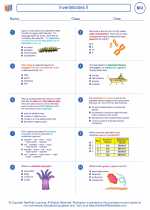 Invertebrates II
Invertebrates II  Worksheet/Answer key
Worksheet/Answer key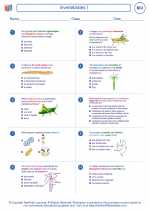 Invertebrates I
Invertebrates I  Worksheet/Answer key
Worksheet/Answer key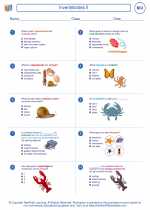 Invertebrates II
Invertebrates II  Worksheet/Answer key
Worksheet/Answer key Invertebrates I
Invertebrates I  Worksheet/Answer key
Worksheet/Answer key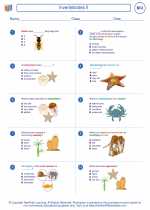 Invertebrates II
Invertebrates II  Vocabulary/Answer key
Vocabulary/Answer key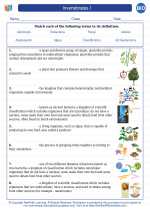 Invertebrates I
Invertebrates I  Vocabulary/Answer key
Vocabulary/Answer key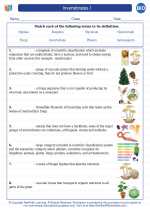 Invertebrates I
Invertebrates I  Vocabulary/Answer key
Vocabulary/Answer key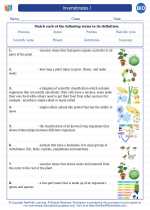 Invertebrates I
Invertebrates I 

 Worksheet/Answer key
Worksheet/Answer key
 Worksheet/Answer key
Worksheet/Answer key
 Worksheet/Answer key
Worksheet/Answer key
 Worksheet/Answer key
Worksheet/Answer key
 Worksheet/Answer key
Worksheet/Answer key
 Vocabulary/Answer key
Vocabulary/Answer key
 Vocabulary/Answer key
Vocabulary/Answer key
 Vocabulary/Answer key
Vocabulary/Answer key

The resources above cover the following skills:
Concepts of Life Science (SC1, SC2, SC3)
The student demonstrates an understanding of the structure, function, behavior, development, life cycles, and diversity of living organisms by describing the structure-function relationship